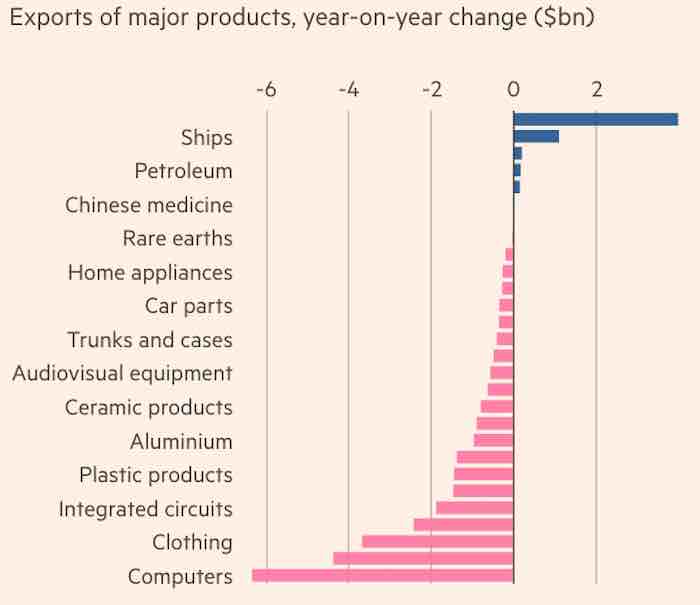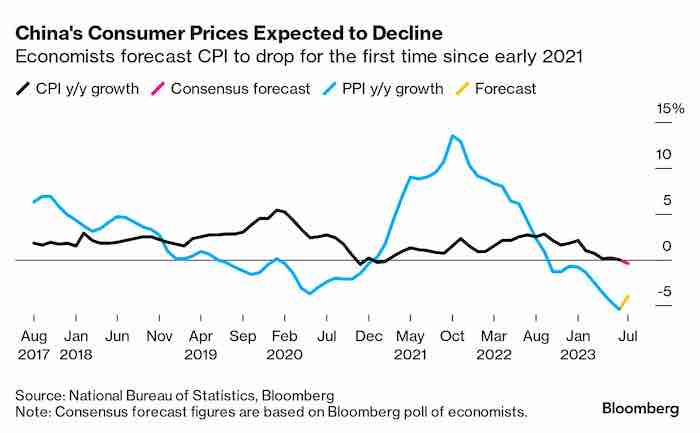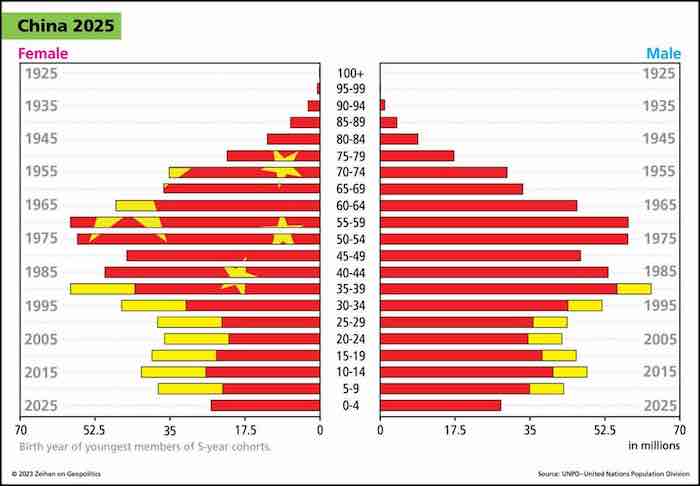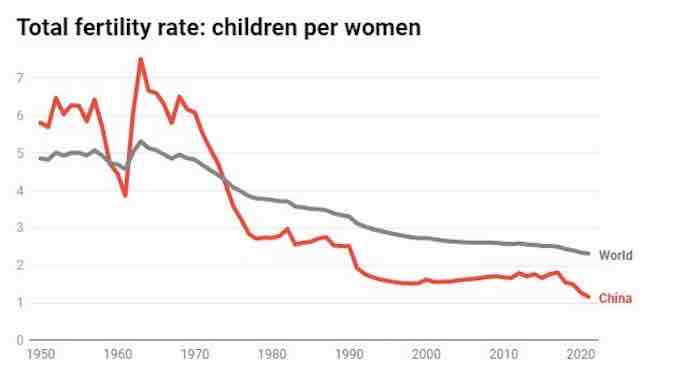By Chet Nagle ——Bio and Archives--August 27, 2023
World News | CFP Comments | Reader Friendly | Subscribe | Email Us

Some weeks ago I wrote in these pages that China Is A Dying Paper Dragon that cannot survive much longer because of its imploding economy and its rapidly aging population. This week newspapers and the internet finally exploded with headlines like: “China Enters the Doom Loop,” “Default of State-Backed Developer Sino-Ocean Signals China’s Economic Crisis,” and “Why is China not rushing to fix its ailing economy?”
The sudden frenzy is exemplified by The Epoch Times publishing China’s July statistics, showing that their economy is collapsing years ahead of my optimistic estimate. Epoch Times journalist Terri Wu wrote: “The world’s second-largest economy has been struggling for months, failing to achieve the post-pandemic boom that many had anticipated. The latest July data release showed exports posting its sharpest year-on-year drop since before the pandemic, and imports at five straight months of decline. Factory-gate prices fell for the 10th consecutive month, while new home sales saw its most significant monthly drop since July 2022,” adding, “China has slid into deflation after months of disappointing exports, manufacturing, home sales, and youth employment results.”
That’s it in a nutshell. Now let’s look at the details.

Today’s China is only able to sell ships, refined petroleum products, medicines, and rare earth minerals. Sales of those products will ultimately dry up too.
These charts show that not only are foreigners not buying, neither are the Chinese. Manufacturing is more than 25% of China’s economy and it has steadily fallen last quarter -- dragging down overall GDP growth to 0.8%. Gone forever are GDP growth rates of five and 10 percent The Chinese economy has now entered a deflationary spiral – the economic nation-killer feared by all central banks.

China’s deflation results in part from U.S. sanctions that ultimately led to plummeting exports, epitomized by the drop in computer exports after China lost the Chip War with the United States. When added to a nosedive in China’s domestic purchases of products from cars to appliances to housing, the result is an oversupply of goods facing an undersupply of demand in both domestic and foreign markets.

These charts show that not only are foreigners not buying, neither are the Chinese. Manufacturing is more than 25% of China’s economy and it has steadily fallen last quarter -- dragging down overall GDP growth to 0.8%. Gone forever are GDP growth rates of five and 10 percent The Chinese economy has now entered a deflationary spiral – the economic nation-killer feared by all central banks.
China’s deflation results in part from U.S. sanctions that ultimately led to plummeting exports, epitomized by the drop in computer exports after China lost the Chip War with the United States. When added to a nosedive in China’s domestic purchases of products from cars to appliances to housing, the result is an oversupply of goods facing an undersupply of demand in both domestic and foreign markets.
The U.S. and Europe can soon expect China's manufacturing problems to flood their markets with inexpensive goods. That is bad news for U.S. and European manufacturers, but good news for consumers. The other good news, in the short term, is that the tide of cheaper products from China will drown some inflation.
Support Canada Free Press

Can the CCP fix its economic crisis? Christopher Balding, an expert on China in the Henry Jackson Society, believes that not even the entire international financial community, including private investors, could bail out the CCP even if they wanted to do so. He said, “The very simple reason is that nobody in the world has the amount of capital that Beijing needs.” That amount of capital exceeds ten trillion dollars, a number that signals the beginning of the end for the CCP and their debt-fueled economy. The CCP’s own chart below confirms that foreign investors are stampeding out the door.

With regard to China’s population crisis, the respected American demographer, Peter Zeihan, redid his graph for China. The result was worse than he had originally thought. Much worse. In drawing the new chart he used the latest official Beijing numbers plus other statistics and internal extrapolations. (Note: yellow bars in the graph below no longer exist.)

These latest data led Zeihan to conclude, “China is entering its final decade of operating as a modern industrialized nation.” As the chart below shows, population projections for 2052 vividly demonstrate China’s future.


Publishing the chart below, even the UN agrees. Demographers estimate the total population of China to be 770 million by the year 2100, a figure that does not include possible famines, civil strife, and warfare.

The CCP knows all this and is trying to solve the problem with programs that include money for sperm donors and allow unmarried couples to have a family with all the benefits reserved for married couples. The CCP also moved from a one-child policy to a two-child policy, then to a three-child policy, and finally abolishing all restrictions. Russia tried a similar “money for babies” program that failed completely. It is all too little too late for China, and no program can change their grim destiny.
The unspoken social contract between the CCP and the Chinese people is based on the government providing international and domestic security plus an ever-rising standard of living. The Chinese people’s part of that contract means living under an oppressive surveillance dictatorship. However, the collapsing economy will soon make it impossible for the CCP to deliver its part of the social contract. So in order to maintain its control the CCP diverts its people’s attention from a lower standard of living by blaming it all on America, the nation the CCP has promised to dominate and destroy with its 1999 published declaration of “unrestricted warfare.”
In its inevitable economic and demographic decline, the dying Chinese paper dragon is still dangerous. That reality means the United States must begin a series of defensive actions, the nature of which we will examine in a future article.
View Comments
Chet Nagle is an experienced analyst and commentator on international commerce, geopolitics, national security matters, the Middle East, and strategic communications. He has been on radio, has appeared in documentary films and has been a guest on television news programs. His columns have appeared in the Daily Caller, The Hill, Roll Call, and many other publications. He is a contributing editor for ANDmagazine.com and the European Security & Defense magazine.